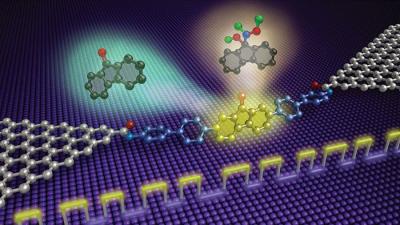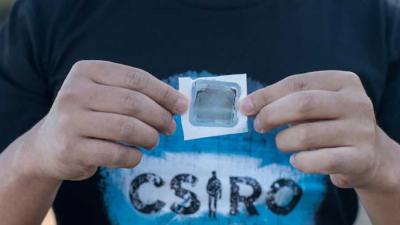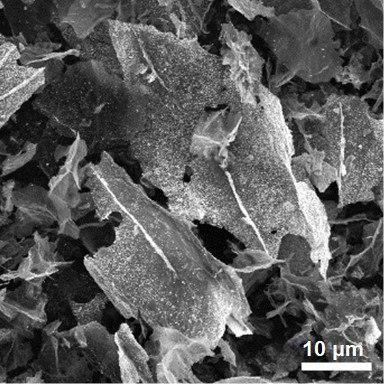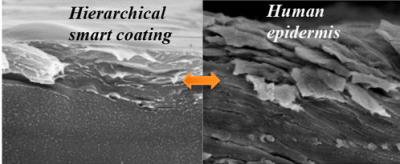A graphene-based device reveals the dynamics of single-molecule reactions
A team of international researchers has made a graphene-based device that captures the real-time dynamics of a classic chemical reaction at the single molecule level. Developed at Peking University, UCLA and the Institute Chinese Academy of Sciences, the method could shed light on the mechanism of chemical and biological processes.

The device consists of two graphene arrays that flank a single molecule covalently tied to each array through amide linkers. The molecule, 9-fluorenone, contains a carbonyl group situated astride three fused rings. The team submerged the device in a solution containing a catalyst and the reagent hydroxylamine, which reacts with 9-fluorenone’s carbonyl group. The reaction changes the electrical charge of 9-fluorenone, so the team could follow the nucleophilic addition reaction by monitoring current conducted by the graphene arrays.






